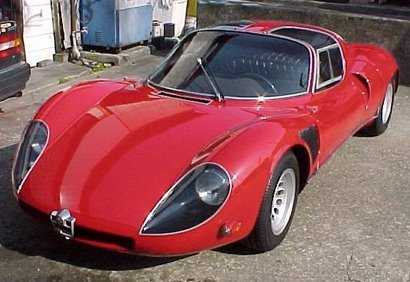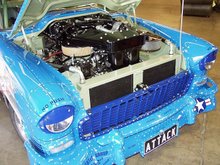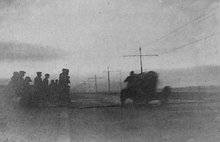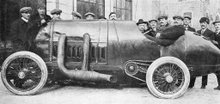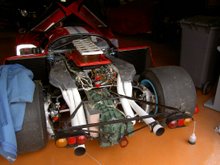... I have a sort of Internet connection.
I was very slack in not providing regular updates about the Fanalone which is now running, quite nicely in fact, though it will need a cylinder head overhaul before too long. This will be in a while as the owner and I are going on a super trip to Corsica soon in the company of the Scuderia Lancia Integrale.
These photos from last year should give you an idea of what's in store; I am very much looking forward to the trip as I am sure you can imagine.
Meanwhile just to show I'm not making it all up, here's a phone camera snap of the Fanalone's subframe assembled:

This time I have two little suggestions some of you might like.
First a close-up from the above shot:

In about 1985, I bought a special spanner from Harry Manning, which happily I still have, for undoing those blasted carburettor nuts. Someone who has worked on the Fanalone though had a brainwave: he found M8 nuts that have "built-in washers" and are just 10mm across the flats; one can undo them with a ¼" drive 10mm socket; hurrah. I think that the nuts are fitted to Peugeots and of course they are lighter than the 13mm originals. Incidentally, I used 12mm AF Mercedes-Benz exhaust nuts on my car but these are much better.
As for the second idea this time, this arises from the following revolting picture - could almost be the subject for a competition:

No, it's not some sort of repulsive
fruit de mer, it's the remains of a lower ball-joint rubber from the Fanalone. As regular readers will know, the car competed in 26 rallies; the owner had experimented with various brake pads, one set of which resulted in smoke and blue discs... The rubber which as you may know is VERY close to the brake disc was simply cooked and had become brittle resulting in greasy brake discs... Not good. So I have renewed both bottom ball-joints and to provide some protection for the rubbers, fabricated a couple of simple heat shields which I hope should help. And one does not want the changing of bottom ball joints to be regular work does one?:


Yes I know it's not truly
artisanale metalwork, but they don't touch the discs and they should do the job!
Finally, yesterday I went to a drag race meeting in Geneva - worth it to see a couple of 1500HP monster "saloons" doing sub- 9 second runs over 400 meters, but the reason I mention this is because the following car was there; sounded great and did a very respectable 13-second run. Perhaps one of my Italian readers can tell me what the words on the back window mean?

A bientôt













